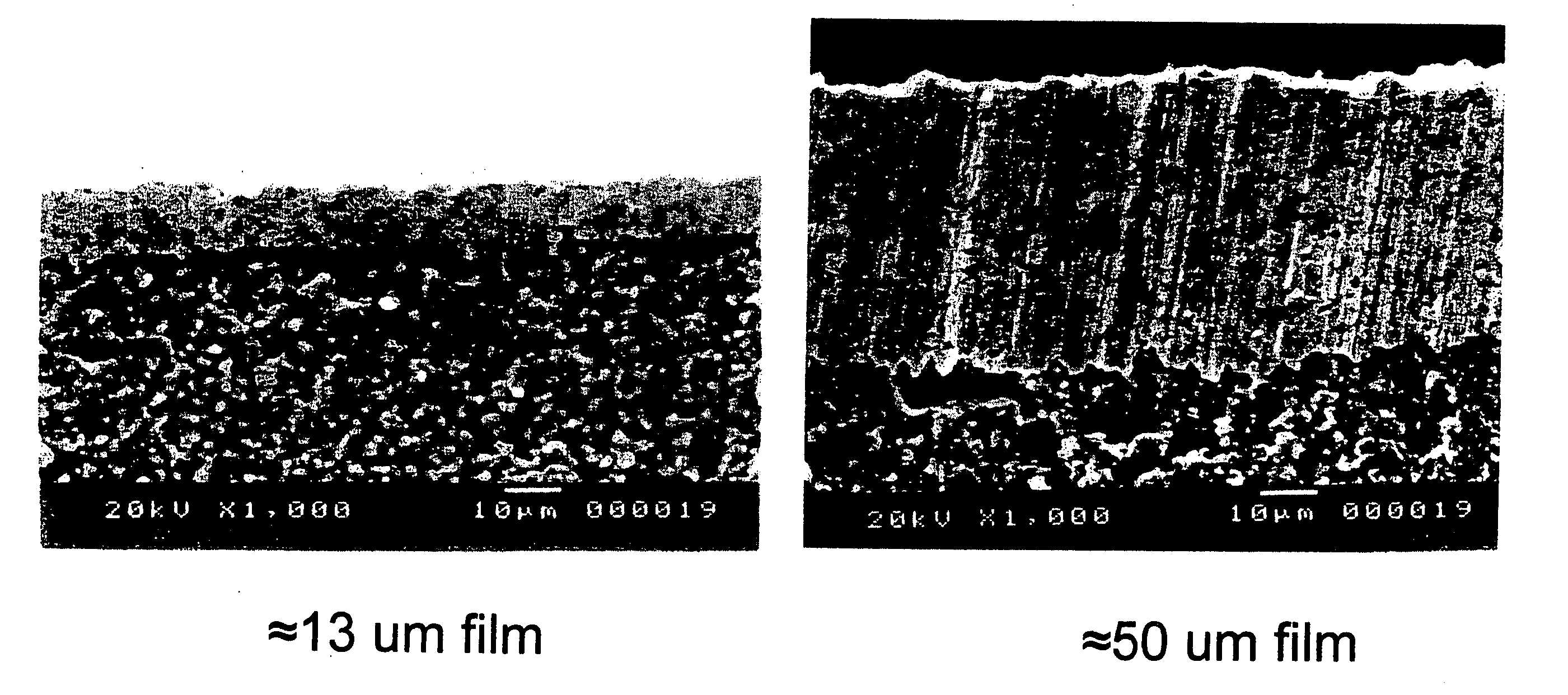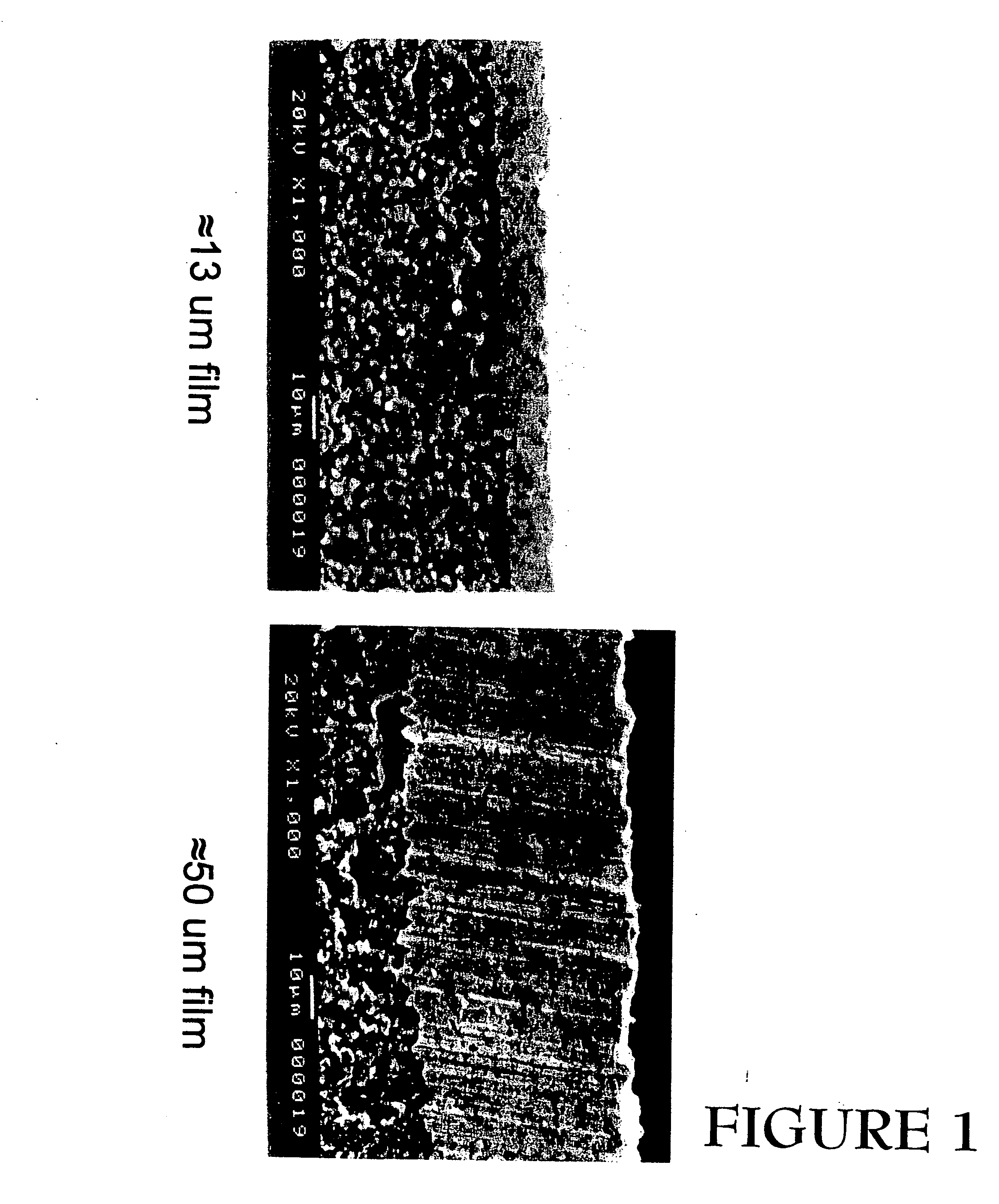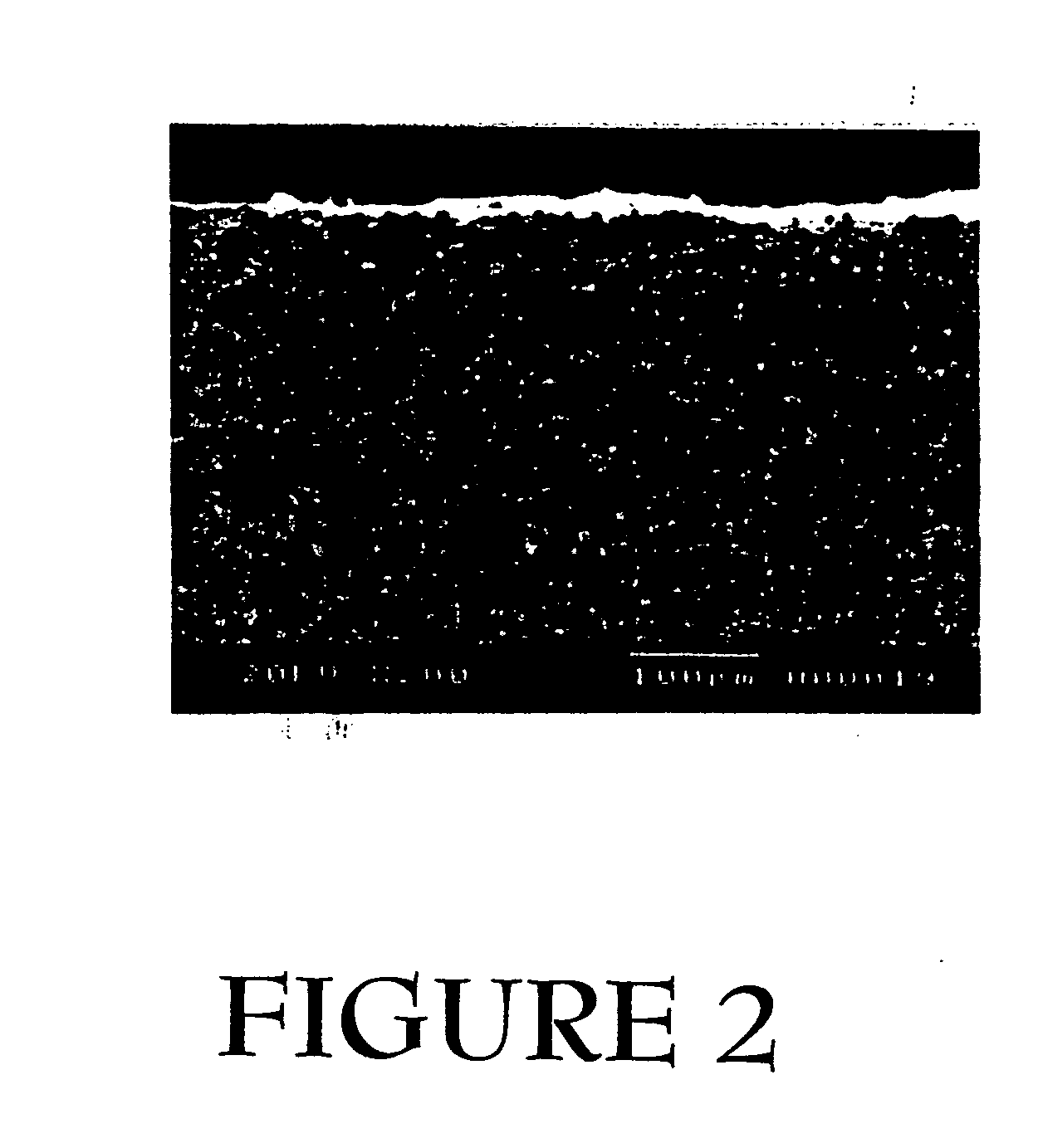Method for fabricating a hydrogen separation membrane on a porous substrate
a technology of porous substrate and hydrogen separation membrane, which is applied in the direction of membranes, separation processes, dispersed particle separation, etc., can solve the problems of high cost, require clean-up, and each of these technologies has its limitations
- Summary
- Abstract
- Description
- Claims
- Application Information
AI Technical Summary
Problems solved by technology
Method used
Image
Examples
Embodiment Construction
[0029] Argonne National Laboratory (ANL) is developing two types of novel ceramic membranes for producing pure hydrogen: hydrogen transport membranes (HTMs) and oxygen transport membranes (OTMs), see Table 1. Both types of membrane are dense and produce hydrogen nongalvanically, i.e., they require neither electrodes nor an external power supply. HTMs produce hydrogen by separating it from mixed gases, e.g., product streams generated during coal gasification and / or methane reforming, whereas OTMs generate hydrogen by removing oxygen that is produced during the dissociation of water at moderate temperatures (<900° C.).
ANL Membrane CompositionsMembraneMatrixMetalANL - 0BCY—ANL - 0bSFC(SrFeCo0.5Ox)—ANL - 0cSFT(Sr1.0Fe0.9Ti0.1Ox)—ANL - 1aBCYNiANL - lbCMONiANL - lcTZ-8YNiANL - 1dSFT(Sr1.0Fe0.9Ti0.1Ox)NiANL - 2aBCYPdANL - 2bCMOPd / Ag(23 wt. %)ANL - 3aAl203PdANL - 3bBaTiO3Pd / AgANL - 3cAl2O3NbANL - 3dAl2O3Pd / Ag(23 wt. %)ANL - 3eTZ-3YPdANL - 3fTZ-8YPdANL - 3gCaZrO3PdANL - 4aCuNb
Notes:
BCY = ...
PUM
| Property | Measurement | Unit |
|---|---|---|
| diameter | aaaaa | aaaaa |
| diameter | aaaaa | aaaaa |
| diameter | aaaaa | aaaaa |
Abstract
Description
Claims
Application Information
 Login to View More
Login to View More - R&D
- Intellectual Property
- Life Sciences
- Materials
- Tech Scout
- Unparalleled Data Quality
- Higher Quality Content
- 60% Fewer Hallucinations
Browse by: Latest US Patents, China's latest patents, Technical Efficacy Thesaurus, Application Domain, Technology Topic, Popular Technical Reports.
© 2025 PatSnap. All rights reserved.Legal|Privacy policy|Modern Slavery Act Transparency Statement|Sitemap|About US| Contact US: help@patsnap.com



